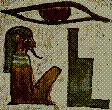OSIRIS
OSIRIS (Optical, Spectroscopic, and Infrared Remote Imaging System)
OSIRIS (Optical, Spectroscopic, and Infrared Remote Imaging System) is the scientific imaging system on the orbiter of ESA's Rosetta mission to comet 67P/Churyumov-Gerasimenko. OSIRIS comprises two cameras: a high resolution Narrow Angle Camera (NAC) and a Wide Angle Camera (WAC). With them, OSIRIS observes the cometary rotation, and studies the physical and chemical processes that occur in, on, and near the cometary nucleus. It also maps the cometary morphology, which will help Rosetta’s lander (Philae) to find a suitable spot for setting down in the comet’s surface. The strength of OSIRIS is the coverage of the whole nucleus and its immediate environment with excellent spatial and temporal resolution and the spectral sensitivity across the whole reflected solar continuum up to the onset of thermal emission. This provides a context for the interpretation of the results from Philae.
Mechanism controller Board (MCB). Its main function is to control all the mechanism included in the camera system.


